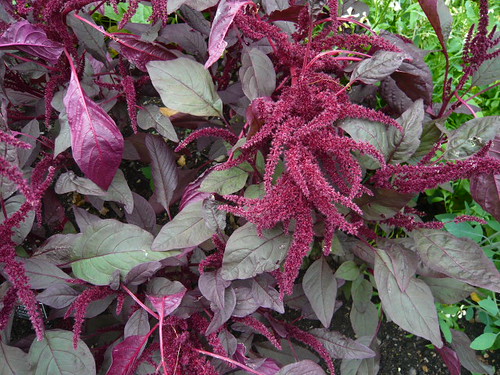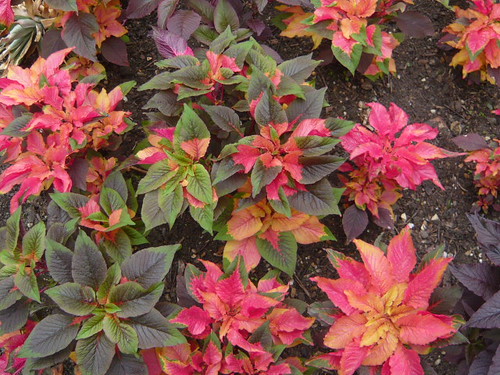Amaranthus – Salad Leaf, Ornamental and Cereal
A family of plants that looks good, tastes good and by golly it does you good – what more can you want.
- Amaranthus (singular Amaranth) has other names in other cultures. I like the African name ‘Chewa’ or the Caribbean ‘Callaloo’.
- Chinese use ‘Bayam’ in stir fries
- The plant has had synthetic red dyes named after it and the Hoppi red Dye variety has long been known for it’s deep red.
- Amaranth ‘Red Army’ is sold by Thompson & Morgan as a green veg like mustard and cress see below.
Thompson Morgan’s Growing Tips
- Grow seeds of Amaranth Red Army microgreens for instant colour and visual appeal, with a mild flavour, brightening salads and garnishes. Micro greens are eaten as young seedlings prior to the first true leaves, when they are full of an intense range of flavours.
- They are quick and easy to grow indoors all the year round.
- Grow in a similar way to mustard and cress. Fill seed trays with vermiculite, then sprinkling the seeds liberally, but not too thickly on the surface. Place the trays on a warm windowsill or in the greenhouse.
- Ensure the seeds are constantly moist and as the seedlings emerge, especially during summer, mist spray or water carefully as necessary.
- Cut these ‘Living Seedlings’ as they develop for immediate use or keep in a plastic bag in the fridge
- Just like sprouting seeds and salads leaves, they are very rich in healthy nutrients, ideal for spicing up sandwiches and salads or to garnish soups.
- Seedlings mature quicker in the warmer, longer days of summer, and take a little longer during the depths of winter.


One thought on “Amaranthus – Salad Leaf, Ornamental and Cereal”
Comments are closed.